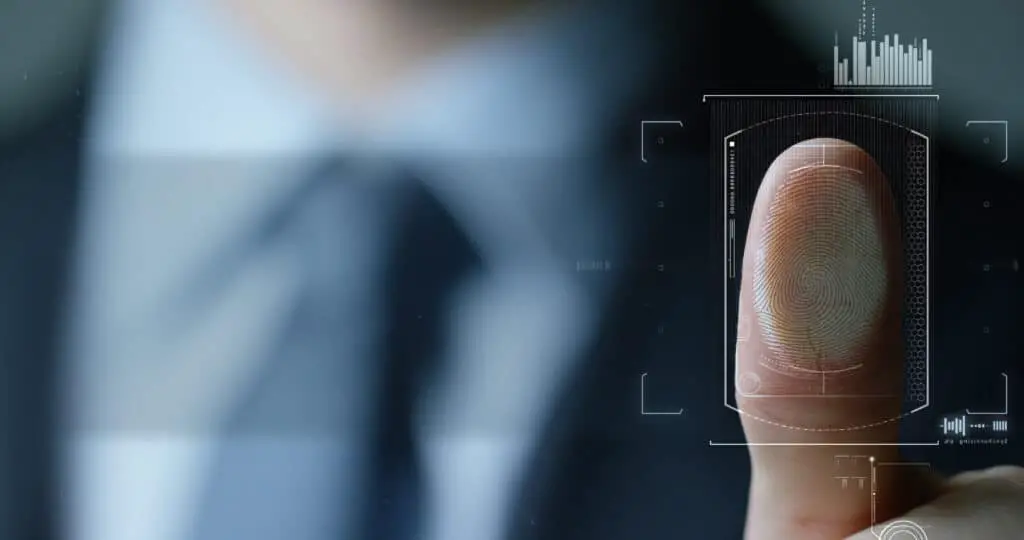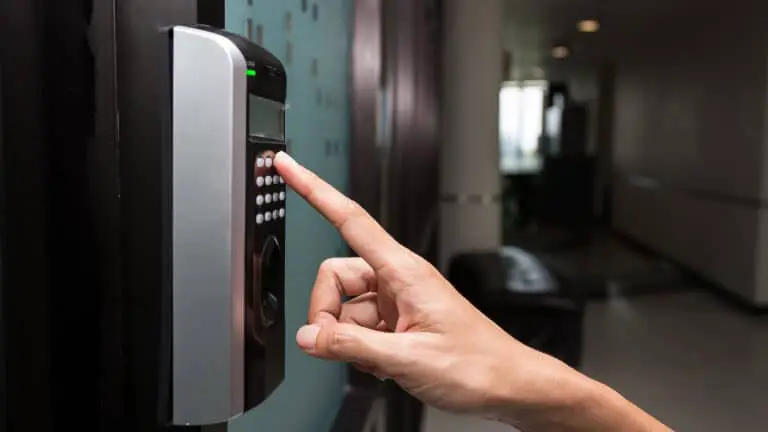Introduction
How To Lift A Fingerprint At Home: Unveiling the world of forensic investigation and detective work, fingerprint lifting stands as an essential skill that allows individuals to uncover hidden clues and solve mysteries right from the comfort of their own homes. The uniqueness and persistence of fingerprints make them invaluable pieces of evidence, often assisting law enforcement agencies and hobbyist sleuths alike in identifying individuals involved in various activities.
From household objects to personal items fingerprint safe , the potential applications of fingerprint lifting are diverse, making it an engaging skill for both learning and practical use.
This guide will serve as your gateway into the fascinating realm of DIY fingerprint lifting. Delving into the science behind fingerprint formation, the materials required, and the step-by-step methods to successfully lift prints, you’ll gain a comprehensive understanding of this essential forensic technique. From everyday objects to treasured possessions, the possibilities for uncovering fingerprints are limitless, offering you the chance to explore and analyze your surroundings with a detective’s eye.

How can fingerprints be lifted?
At a crime scene, forensic investigators find fingerprints by dusting surfaces with a dark powder that sticks to the prints. If they find any, they can lift the prints away using clear adhesive tape.
Lifting Tape: Thin, transparent adhesive tapes are the primary tools for lifting prints. These tapes are designed to adhere to the oils and residues left behind by fingerprints without damaging the surface.
Backing Card: This is a rigid card that provides support for the lifting tape and helps prevent it from wrinkling or folding during the lifting process.
Powders: In cases where fingerprints are not readily visible, fingerprint powders can be used. These powders adhere to the oils in the fingerprint, making it visible and easier to lift.
Brushes: These brushes help distribute the powder evenly over the surface, enhancing the visibility of the latent print.
Survey the Scene: Before attempting to lift fingerprints, carefully assess the scene. Look for surfaces likely to hold fingerprints, such as smooth and non-porous objects like glass, metal, or plastic.
Choose the Method: Depending on whether the fingerprint is visible or latent, you can choose between direct lifting (when the fingerprint is visible) or using fingerprint powders to make the print visible before lifting.
Can tape lift fingerprints?
This lifting tape is designed for lifting of fingerprints which are developed with fingerprint powder. Lifting tape works best when lifting prints from flat surfaces like glass windows.
Choosing the Right Tape: Opt for a thin, transparent adhesive tape specifically designed for forensic applications. This tape should possess excellent adhesive properties to capture the fingerprint.
Application: Gently peel a section of the tape from its roll, being cautious not to touch the adhesive side. Place the tape over the fingerprint, ensuring the adhesive makes contact with the ridges.
Press and Lift: Use a clean backing card or a similar tool to press the tape onto the fingerprint. Slowly peel the tape off, taking care that the fingerprint adheres to the tape’s adhesive surface.
Transfer: Attach the lifted tape onto a clean backing card or storage surface for preservation. This protects the fingerprint and maintains its integrity.
Choosing the Powder: Select a suitable fingerprint powder based on the surface texture and color. The powder should adhere to the oils in the fingerprint.
Application: Using a soft brush, lightly apply the powder to the surface where you suspect a latent fingerprint might be present.
What are 3 ways to lift fingerprints?
Lifting Fingerprints
- Baby powder or other fine powder.
- Small brush.
- Scotch tape.
- Dark color paper construction paper.
- A smooth flat surface.
- Your fingerprints.
Crime Scene Investigation: The tape lift technique is particularly valuable in crime scene investigation. It allows investigators to preserve and collect fingerprints from various surfaces without compromising the integrity of the evidence.
Non-Destructive: One of the most significant advantages of the tape lift technique is its non-destructive nature.
Versatility: This versatility makes it a go-to method for collecting prints from diverse crime scenes.
Ease of Use: Tape lifting is relatively simple to perform, requiring minimal training. This accessibility allows law enforcement personnel and even amateur detectives to gather valuable evidence.
What are 2 methods of lifting fingerprints?
Choosing the Right Tape: Opt for a thin, transparent adhesive tape specifically designed for forensic applications. This tape should possess excellent adhesive properties to capture the fingerprint.
Application: Gently peel a section of the tape from its roll, being cautious not to touch the adhesive side. Place the tape over the fingerprint, ensuring the adhesive makes contact with the ridges.
Press and Lift: Use a clean backing card or a similar tool to press the tape onto the fingerprint. Slowly peel the tape off, taking care that the fingerprint adheres to the tape’s adhesive surface.
Transfer: Attach the lifted tape onto a clean backing card or storage surface for preservation. This protects the fingerprint and maintains its integrity.
Choosing the Powder: Select a suitable fingerprint powder based on the surface texture and color. The powder should adhere to the oils in the fingerprint.
Application: Using a soft brush, lightly apply the powder to the surface where you suspect a latent fingerprint might be present.
How long do fingerprints last on paper?
40 years
Forensic science Blog
Selecting the Right Tape: Choose a thin, transparent adhesive tape that is specifically formulated for forensic purposes. The tape should possess excellent adhesive properties to ensure a successful lift.
Application: Carefully peel a section of the tape from its roll, ensuring not to touch the adhesive side. Gently place the tape over the suspected fingerprint area, making sure the adhesive contacts the ridges of the print.
Press and Lift: Use a backing card or a similar clean tool to press the tape firmly onto the fingerprint area. Slowly peel the tape off, ensuring the fingerprint adheres to the tape’s adhesive surface.
Preservation: Attach the lifted tape onto a clean backing card or designated surface to preserve the lifted fingerprint. This step prevents contamination and maintains the integrity of the evidence.
Preparing the Setup: Place the item suspected of bearing latent prints inside a sealed chamber. A small dish containing a few drops of cyanoacrylate is heated, causing it to vaporize.
How long do fingerprints last?
Q: How long will fingerprints last? A: There is no scientific way to know how long a latent fingerprint will last. Fingerprints have been developed on surfaces that had not been touched in over forty years; yet not developed on a surface that was handled very recently.
Surface Type: The type of paper can significantly impact the longevity of fingerprints. Porous papers, such as newsprint or tissue paper, tend to absorb oils more readily, potentially leading to faster degradation of the print. Non-porous papers, on the other hand, might preserve prints for a more extended period.
Environmental Conditions: Factors such as humidity, temperature, exposure to light, and air circulation can accelerate or decelerate the degradation process.
Oils and Contaminants: The natural oils and contaminants present on fingers can both aid and hinder the longevity of fingerprints. Clean fingers might leave prints that are more enduring, while dirty or oily fingers might introduce substances that interact with the paper and degrade the print faster.
Handling and Touch: The frequency of handling the paper and the pressure applied during contact can influence how long a fingerprint lasts. Excessive handling or rough contact might accelerate the degradation process.
What powder is used to lift fingerprints?
Fingerprint powder is a very fine powder that is either white or black. Officials use either talcum-based powders for white, or graphite-based powders for black.
Surface Type: Porous surfaces like paper or fabric tend to absorb oils and contaminants from the fingers, potentially causing the print to degrade faster. Non-porous surfaces like glass or metal might preserve prints for a longer duration.
Environmental Conditions: External conditions such as humidity, temperature, exposure to light, and air quality influence the preservation of fingerprints. Harsh environments can accelerate degradation, while controlled environments can extend the lifespan of prints.
Oils and Contaminants: The oils, sweat, and contaminants present on human skin can both aid and hinder fingerprint preservation. Clean, dry fingers might deposit more enduring prints, while oily or contaminated fingers might introduce substances that interact with the surface and accelerate degradation.
Handling and Contact: The frequency of contact and the pressure applied to surfaces can impact fingerprint longevity. Excessive handling or rough contact can wear down the print over time.
What is the best surface to lift fingerprints?
“The most ideal surface for fingerprints is something that’s smooth and nonporous,” like plexiglass. Steiner uses a special white powder to gently dust fingerprints, making them visible to the human eye.
Black Powder: It is versatile and works well on light-colored surfaces. The contrast between the black powder and the surface helps bring out the fingerprint details.
White Powder: Its light color contrasts against the surface, making the latent print visible.
Magnetic Powder: Magnetic powders contain iron particles and are used with a magnetic applicator. They are particularly effective on textured surfaces like fabrics, where the particles adhere to the oils in the fingerprint.
Fluorescent Powder: Fluorescent powders are used in conjunction with a UV light source. These powders emit light in a different wavelength when exposed to UV light, making the fingerprint glow and enhancing visibility.

Conclusion
By understanding the unique qualities of fingerprints, the significance of proper technique, and the array of materials at our disposal, we have uncovered the tools needed to unveil hidden stories from surfaces we interact with daily.
Armed with knowledge about fingerprint scanner patterns, the right tools, and meticulous techniques, you now possess the ability to turn your home into a miniature forensic laboratory. The satisfaction of successfully lifting a fingerprint, whether from a glass, a doorknob, or even a cherished item, is not just about solving puzzles, but about embracing the thrill of discovery.
Remember, as you embark on your fingerprint lifting endeavors, that practice makes perfect. Patience and attention to detail are your allies, and each attempt is an opportunity to refine your skills. Whether you’re nurturing a growing fascination with investigative methods, nurturing your inner detective, or simply seeking a unique hobby, the art of fingerprint lifting offers it all.

